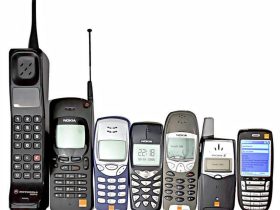The recent FAA (Federal Aviation Administration) 5G Warning has airlines and pilots worried.
Airlines have requested a delay in the rollout, citing potential interference with aircraft radio altimeters – critical devices that provide pilots with accurate altitude information in low-visibility environments.
In addition, the Airlines for America organization cited a recent study that estimates that the rollout of 5G will result in delays, diversions, and cancellations for more than 340,000 passenger flights and 32 million passenger trips.
The study also estimates that the rollout could cost airlines $2.1 billion per year in operating costs, as well as lost wages for passengers.
Radio altimeters
The FAA has issued a warning to airlines about 5G radio altimeters. The warning comes just before Halloween 2021, when mobile communication companies are set to begin rolling out 5G services.
The FAA is concerned that 5G signals could interfere with altimeters in aircraft, causing a crash. It has urged airlines to delay the rollout until the safety risks are fully understood. The FAA is not the only government agency concerned about 5G.
The FAA is taking measures to mitigate the impact of this interference on altimeters. The new standards are intended to prevent aircraft from experiencing interference from cellular networks.
The technology in altimeters can become distorted, causing the device to lose functionality or produce erroneous readings hundreds or even thousands of feet below the actual altitude. While some altimeters will not be affected, others may become useless.
Interference with them
Concerns over 5G service interference have prompted the Federal Aviation Administration (FAA) to issue an alert to the aviation industry.
The Special Airworthiness Information Bulletin outlines the dangers and recommends actions to protect the safety of the traveling public.
Despite concerns about potential interference, the FAA says that 5G deployments in the C-band have not interfered with aircraft safety equipment in other countries. The industry is now taking steps to address the issues.
The FAA is working with wireless companies to develop a solution that will prevent interference from disrupting commercial air travel.
As a first step, the FAA has warned airlines that 5G signals could interfere with radio altimeters. The agency also requires regional aircraft operators to retrofit radio frequency filters on commercial flights by the end of the year, and airlines to do so as soon as possible.
The warning has prompted the airlines and wireless companies to postpone the launch of 5G service until the problem has been resolved.
Airplanes with approved altimeters
A large percentage of the U.S. commercial fleet has been cleared to land in low visibility due to the new 5G technology.
The FAA has approved two different radio altimeters to help pilots determine their altitude even during conditions of poor visibility.
The new technology will also open up more runways at 48 airports. The FAA has issued a notice to pilots notifying them of the new 5G technology.
In order to protect airplanes and pilots, the FAA has issued an Airworthiness Directive (AD) 2022-03-05 for all models of the B777 and B747-8.
The AD prohibits aircraft from entering the laws governing landing and tail strike protection when there is a 5G NOTAM.
The Air Line Pilots Association has warned that this directive could prevent pilots from safely landing a plane during low visibility.
However, the FAA is working with the FCC and cellphone companies to ensure the safety of the airspace.
Airports with temporary buffer zones
The FAA says temporary buffer zones will help avoid disruptions during the transition from 4G to 5G wireless service later this month.
The list includes the nation’s largest airports, including John F. Kennedy International Airport in New York, Los Angeles International Airport, and Chicago O’Hare International Airport.
The zones are set up to block the C-band 5G signal for at least 20 seconds.
The new rules are designed to protect aircraft during the final 20 seconds of their flight, when signals from the new 5G technology may interfere with airplane altimeters.
The altimeters on airplanes use radio signals from the airport to gauge their altitude. The FAA’s temporary buffer zones are 2.5 times larger than those in France.
Despite the fact that France is using the latest technology, its temporary buffer zones are only meant to protect the last 20 seconds of flight.
Impact on flight schedules
The impact of the FAA’s 5G warning on flight schedules is uncertain, and it remains unclear how it will affect flight operations.
The FAA has a long history of being skeptical of new technologies, and may be waiting to make sure carriers have proven C-band spectrum is safe.
Last year, the FAA reversed its unilateral ban on cell phones on airplanes after years of complaints by airlines and the consumer technology industry.
While the FAA is still deciding whether to issue additional approvals for 5G, the agency is considering alternate safety measures in the near future.
In the meantime, the DOT and AT&T will employ additional protection measures around airports for the next six months.
This could affect more than 5,400 passenger flights and approximately five thousand cargo flights. As a result, the 5G warning is affecting flight schedules.
Impact on operations
A recent report found that nearly 45 percent of commercial flights operate at airports near areas where the FAA is phasing in 5G networks.
However, more approvals will be needed before the networks are fully operational. Hundreds of airlines and shipping companies have expressed concern about the impact 5G could have on flight operations and their supply chains.
Some carriers are even considering cancelling international flights. In the meantime, the FAA has issued a statement to allay concerns, but it’s unclear what steps will be taken next.
The impact of 5G is different in different areas, but a recent report from the RTCA, an industry association, warns that widespread use could lead to catastrophic failures and multiple fatalities.
The report goes on to say that the use of 5G technology could pose a significant risk for aircraft landing at airports that are experiencing 5G interference.
In some cases, radio altimeters will not work in these situations, which could cause the aircraft to veer off the runway. This will severely restrict landings at airports where visibility is poor.








Leave a Reply